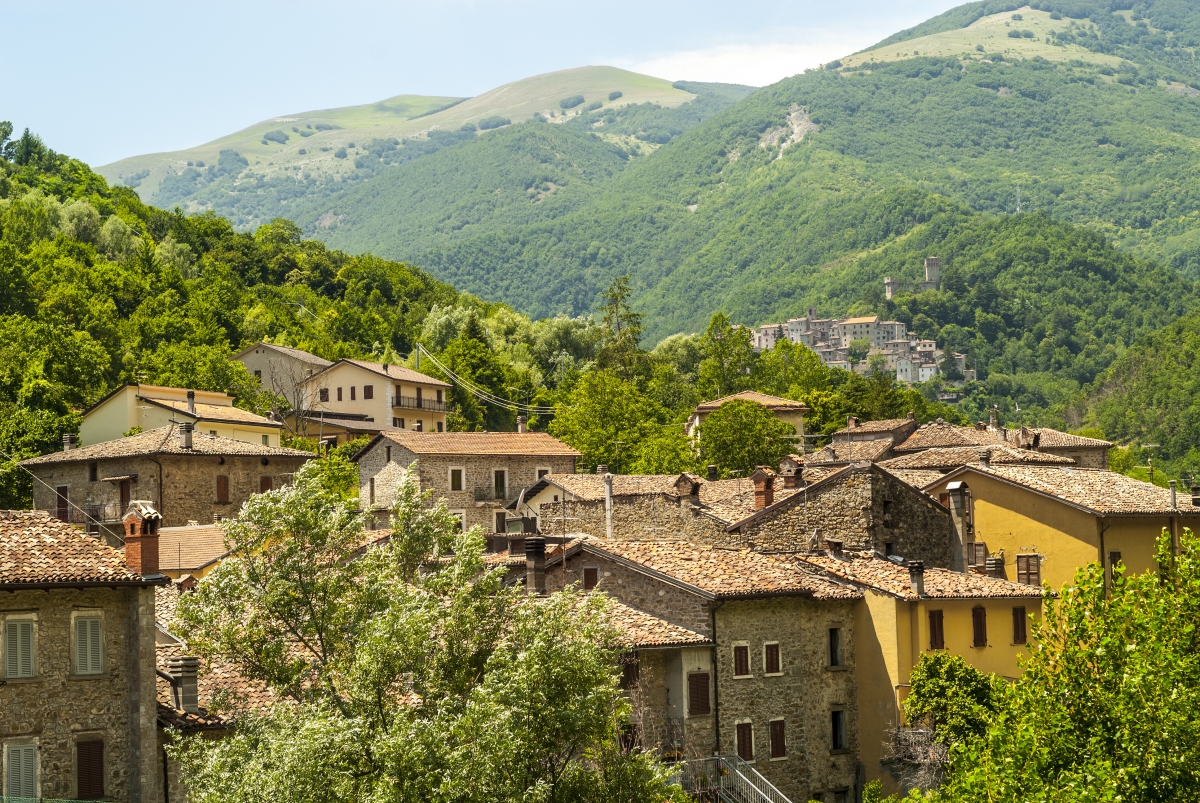
Alecia Wood embarks on a two-week culinary tour hosted by Australian operators through some of Italy’s lesser-known regions.
Ascoli Piceno is built from a mass of travertine. The pale grey-brown limestone can be found within the surrounding mountains, used to construct the city over the centuries. A closer look reveals a medley of architectural influences, the result of many an invading force, as we discover thanks to our personal history buff, Kari.
Accompanied by the co-owners of the tour group Carolinasusi Italia Tours – Carrol and Sue – plus a dedicated Italian tour guide, Chiara, our group of seven is on a two-week food tour of Italy’s Marche and Emilia-Romagna with the Brisbane-based tour company. Epicurean experiences are set to form the crux of a relaxed itinerary.
Our first morning in Marche means getting acquainted with the area, founded by the Piceni people in 900BC and later ruled by the Romans, Lombards, Franks and the Sforza monarchy, before being annexed in 1860 during the unification of Italy.
Kari takes us on a whirlwind journey through the city’s past as we wander the historic centre and learn to, as she says, “read the walls”. Larger stone blocks at a building’s base suggest a Roman era foundation, as only the power of many slaves could move such massive slabs; stunted doorways mark a former nobleman’s tower; swallow tail-shaped peaks on rooftops signify resistance to the Pope’s rule.
“È Kari? Buongiorno a tutti!” – Is that Kari? Good day everyone! – we hear belted out a window. Originally from Norway, Kari’s been living here since the 70s after marrying a local, and bumps into familiar faces all over town. “The people in Marche are hard working and industrious, but also very interested in culture,” she tells me, adding that there are 74 theatres in the region.
There’s a surprise in store for that night – Carrol and Sue like to keep a few of these up their sleeve, it turns out – where a dimly lit drive to a nearby town reveals the stunning Castel di Luco. It’s an 11th Century castle perched atop a giant rock, and our dining destination for the evening. A tour around the bygone stables and larder with the owner, Francesco, is followed by dinner in the intimate, frescoed dining room.
We return to Palazzo Guiderocchi, our four-star hotel housed partly in a 16th Century castle, feeling sleepy from perhaps a little too much rosso piceno, the local red wine blending sangiovese and montepulciano grapes.
Sunday morning sees a culinary mission to hunt down truffles in the nearby Sibillini Mountains, where we meet Emanuele who’s been seeking out the precious fungi here for decades. Guided along a forest path with his trusty dogs, we unearth summer black truffles (known as a scorzone) and small white ones, then amble to the village of Montefortino for a long, lazy lunch – a regular occurrence on this trip.
Boisterous families are packed onto long tables inside Osteria Peppa, where we dine on maccheroncini di Campofilone – a local egg pasta formed into long, flat strands – in a rich mushroom sauce, finished with white or black truffle that we shave over the dish to our liking. A little glass of vincotto, a sweet, syrupy digestif of cooked grape must, concludes the multi-course meal.
A couple of days later, we’re in the midst of prepping traditional olive ascolane. “Dobbiamo mangiare oggi!” – We need to eat today! – Claudia shouts jokingly to hurry us along. She and her husband Luciano own the Relais del Colle agriturismo, where our hands-on cooking class involves carefully spiralling away the flesh of the local olive variety. We then stuff the pitted olives with minced veal and chicken, then crumb and deep-fry them to make a moreish antipasto. Our hosts are effervescent, even jumping aboard our bus as we roll away down the driveway to play a farewell tune on the accordion.
From Ascoli Piceno, we drive a few hours by bus onto Bologna, reaching Hotel Internazionale on a bustling road in the centre. On arrival, Chiara gives us an orientation of the city’s major monuments, piazze and buildings. “Welcome to my city!” she exclaims in front of the Fountain of Neptune. A native bolognese, she’s clearly proud of her hometown, with a new energy for Emilia-Romagna that’s palpable.
We meet Rita on our second day in town, a local sfoglina – a woman who makes pasta – to go shopping in the downtown Mercato di Mezzo for ingredients to make a traditional ragù alla Bolognese. “You’re in the right place!” she says when Chiara explains our group’s interest in Italian food and wine, as we watch her effortlessly knead flour and egg yolks into a silky dough back at her pastificio. During this cooking class, we learn our way around a giant rolling pin and shape diminutive tortellini by hand, later dining on the fruits of our labour inside Rita’s shop.
Carrol and Sue’s passion for all things Italian was reflected across the itinerary – years spent exploring each destination makes for honest encounters with locals in lesser known spots – and the group, attracting a crew of likeminded Italophiles. Between wine tastings at vineyards, exploring abundant produce stalls and many a memorable meal, the trip struck a considered balance between group activities and free time, as well as offering both culinary pursuits and cultural knowledge.


